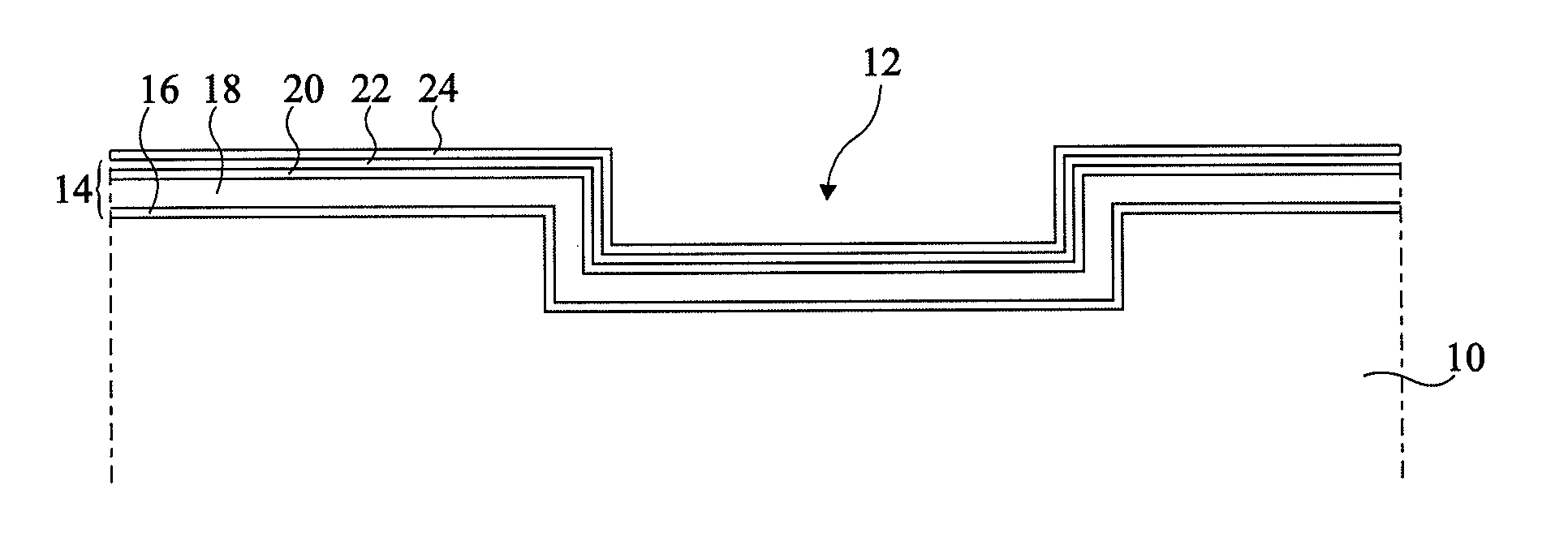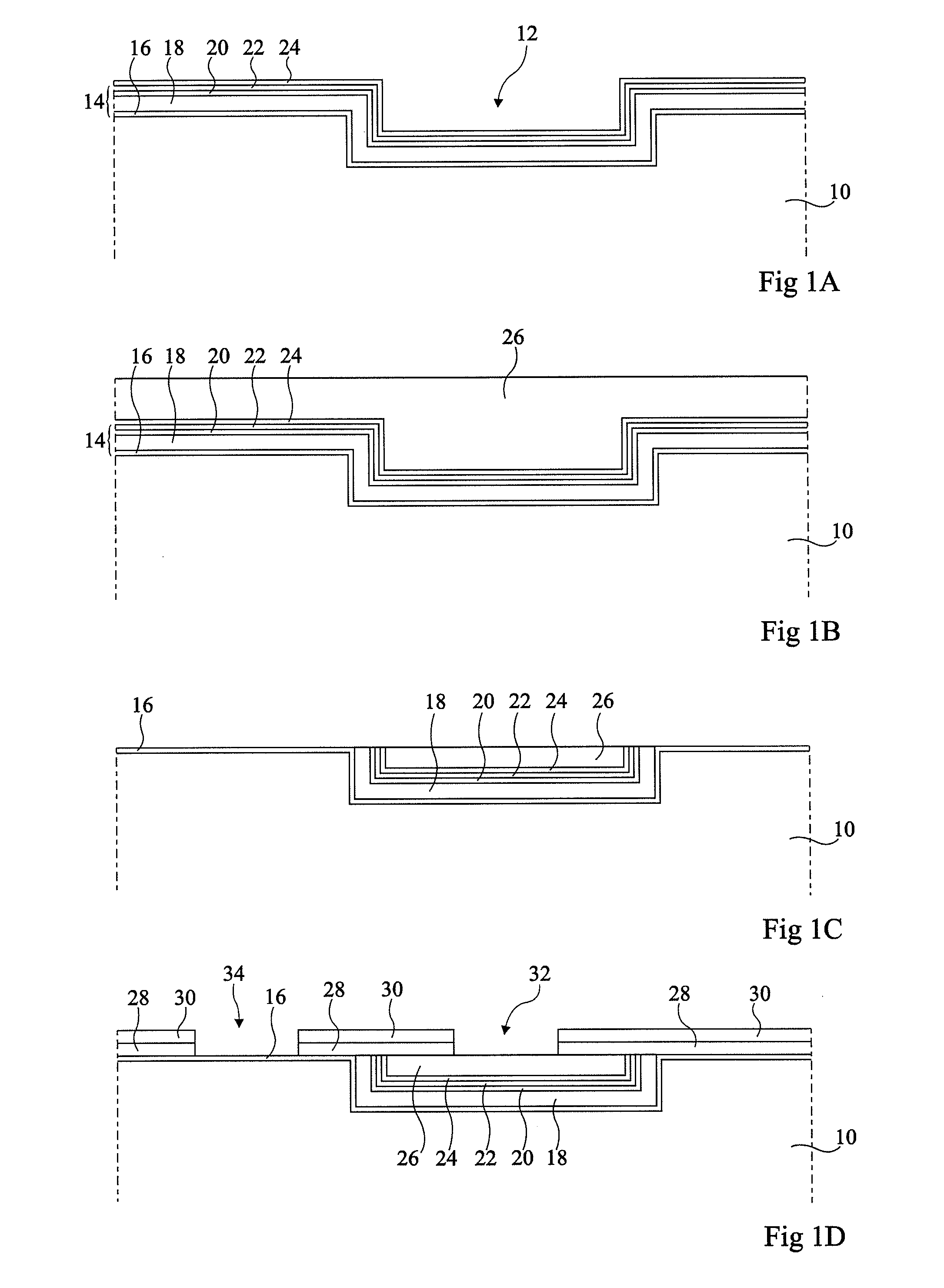Method for forming a vertical thin-film lithium-ion battery
a lithium-ion battery and vertical technology, applied in the direction of cell components, primary cell maintenance/servicing, sustainable manufacturing/processing, etc., can solve the problems of large substrate surface area, large cost of shadow masking techniques, and inability to adapt to form batteries of smaller dimensions
- Summary
- Abstract
- Description
- Claims
- Application Information
AI Technical Summary
Benefits of technology
Problems solved by technology
Method used
Image
Examples
Embodiment Construction
[0033]For clarity, the same elements have been designated with the same reference numerals in the different drawings and, further, as usual in the representation of small thin-film components, the various drawings are not to scale.
[0034]FIGS. 1A to 1E illustrate results of steps of a method for forming a thin-film planar lithium-ion type battery (both electrode contacts being formed at the surface of the device).
[0035]At the step illustrated in FIG. 1A, it is started from a structure comprising a substrate 10 in which a trench 12 is formed. As an example, substrate 10 may be made of silicon, of silicon of high resistivity, or of silicon oxide. Trench 12 may for example be obtained by lithography, by means of a resin in which an adapted pattern is previously formed. Preferably, trench 12 has a depth ranging between 5 and 30 μm and surface dimensions of the substrate ranging between 700 and 900 μm.
[0036]A stack 14 of the different layers forming a lithium-ion type battery is formed on...
PUM
| Property | Measurement | Unit |
|---|---|---|
| Thickness | aaaaa | aaaaa |
| Thickness | aaaaa | aaaaa |
| Thickness | aaaaa | aaaaa |
Abstract
Description
Claims
Application Information
 Login to View More
Login to View More - R&D
- Intellectual Property
- Life Sciences
- Materials
- Tech Scout
- Unparalleled Data Quality
- Higher Quality Content
- 60% Fewer Hallucinations
Browse by: Latest US Patents, China's latest patents, Technical Efficacy Thesaurus, Application Domain, Technology Topic, Popular Technical Reports.
© 2025 PatSnap. All rights reserved.Legal|Privacy policy|Modern Slavery Act Transparency Statement|Sitemap|About US| Contact US: help@patsnap.com



